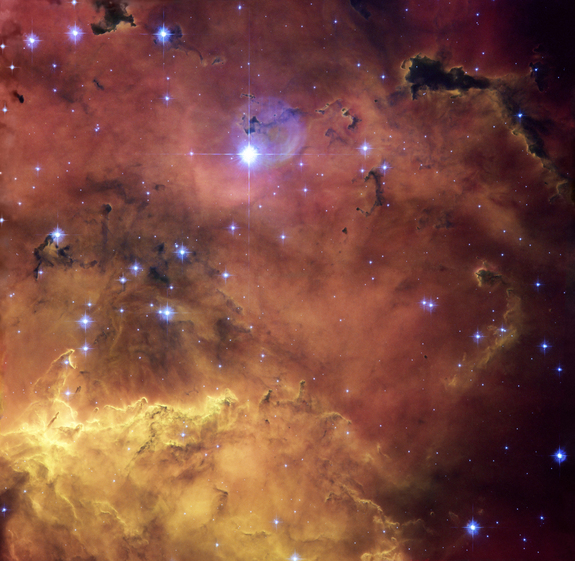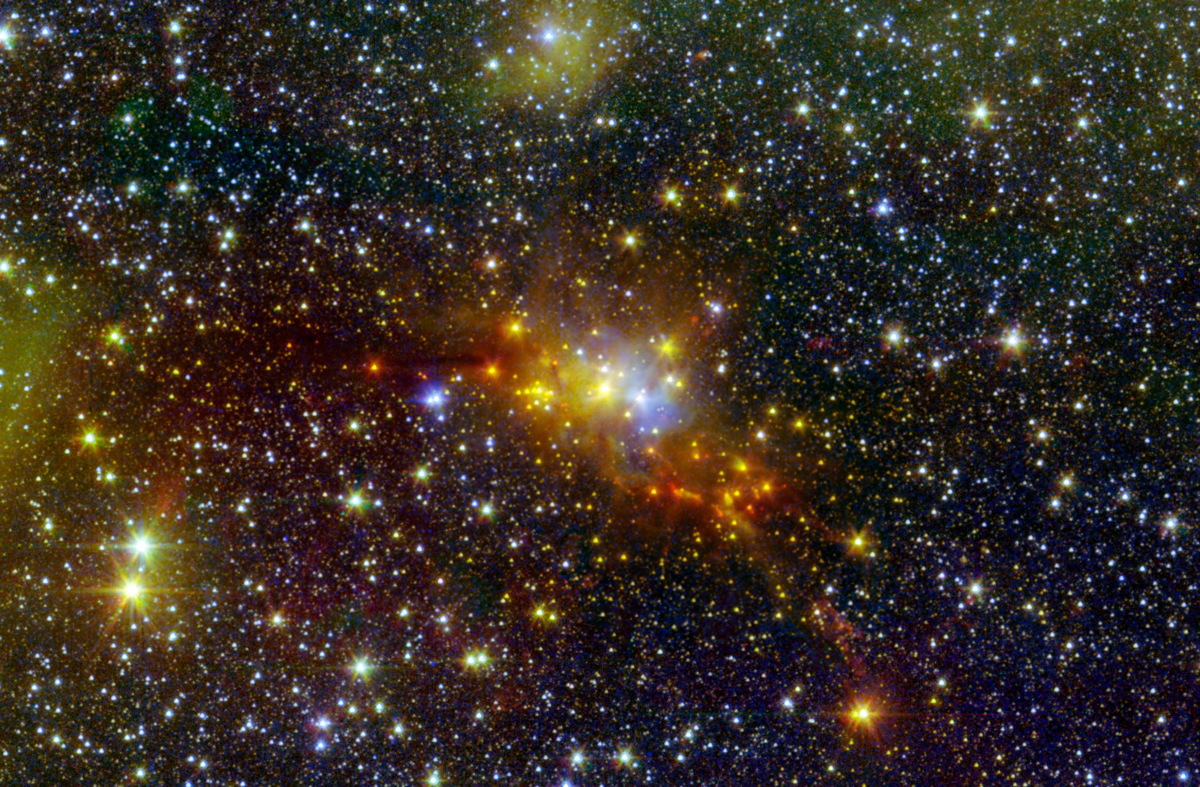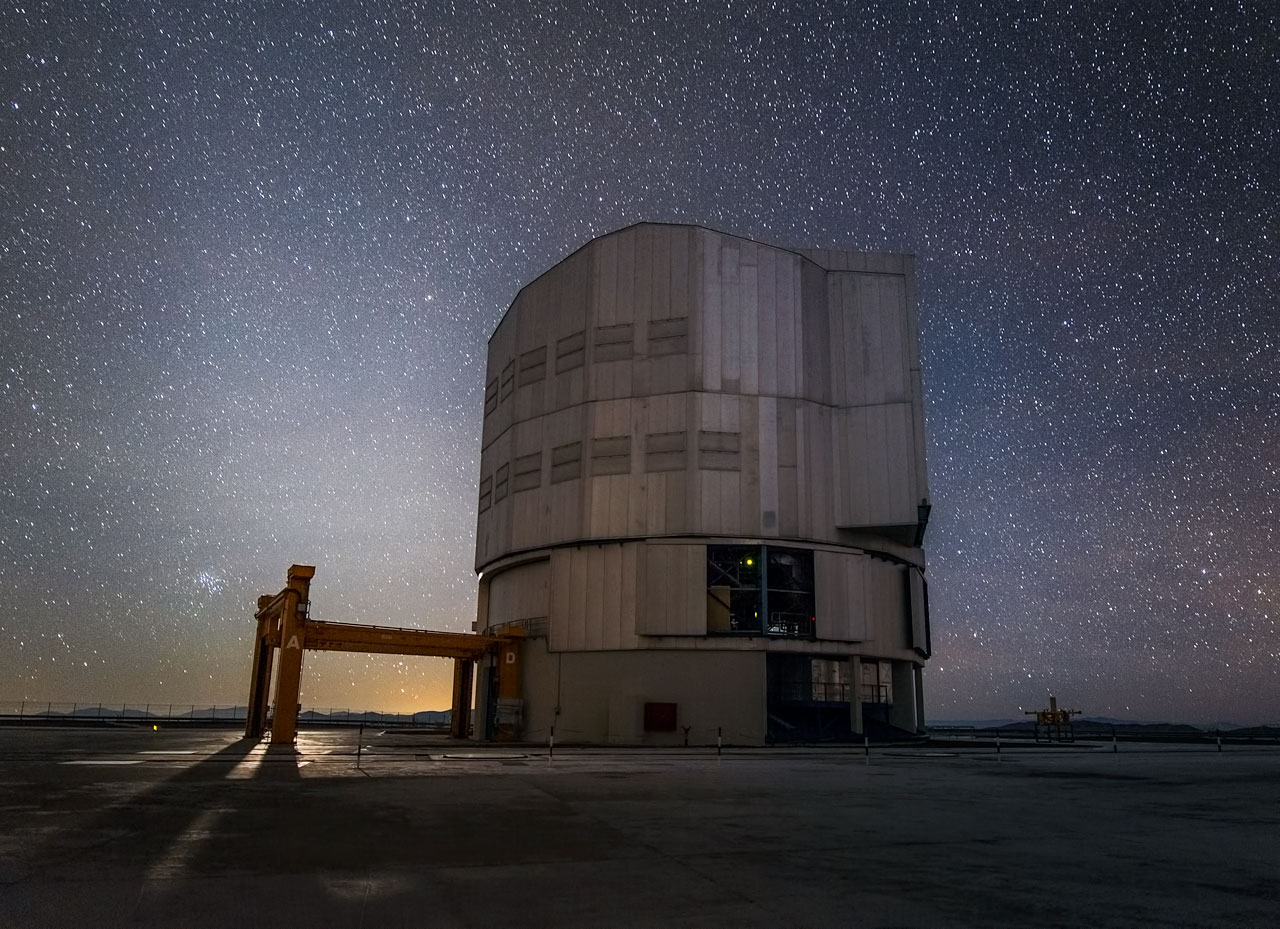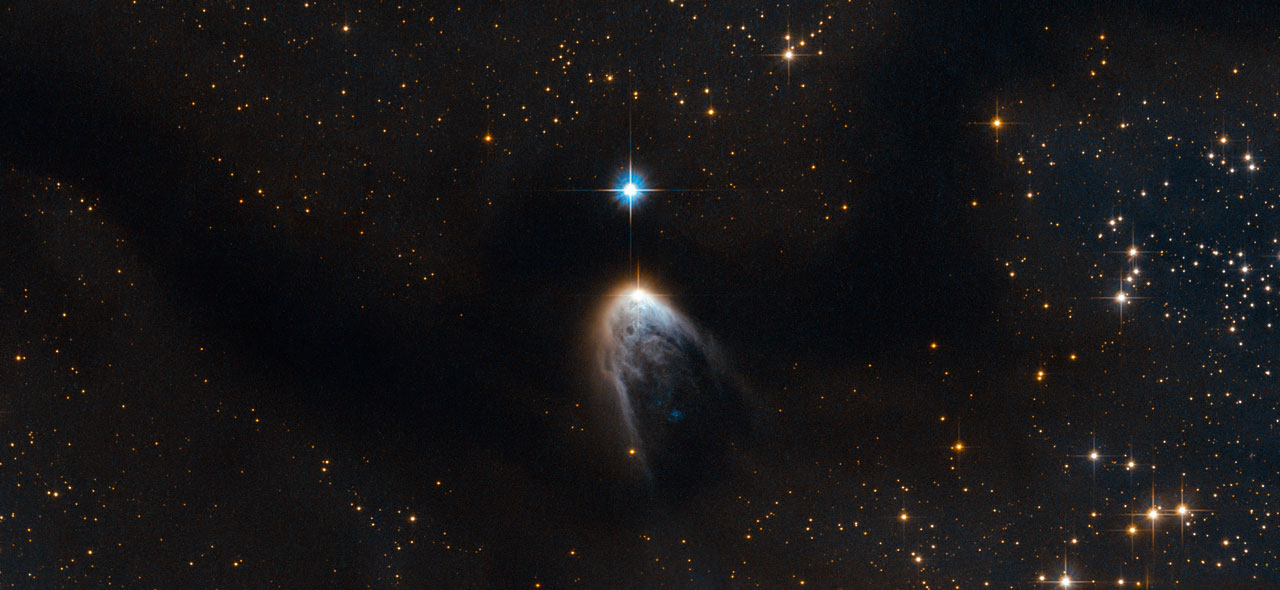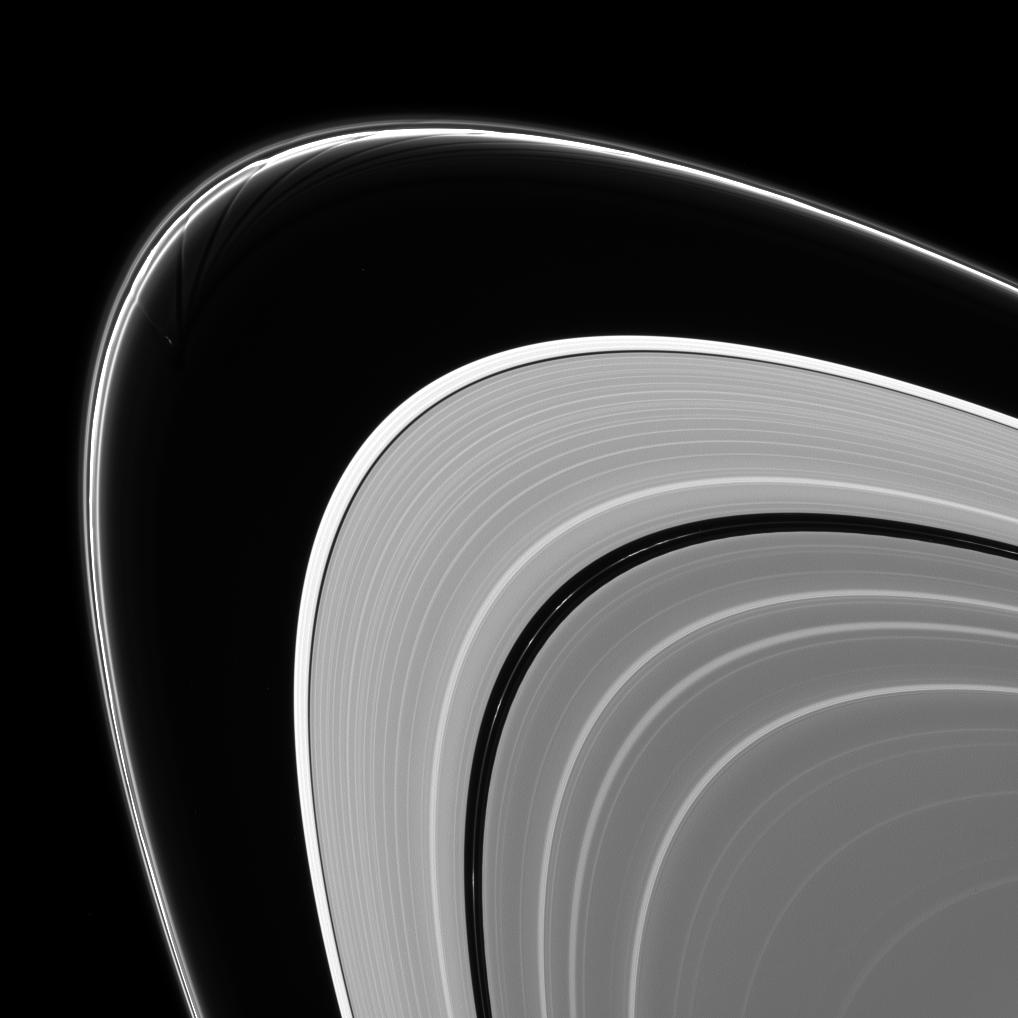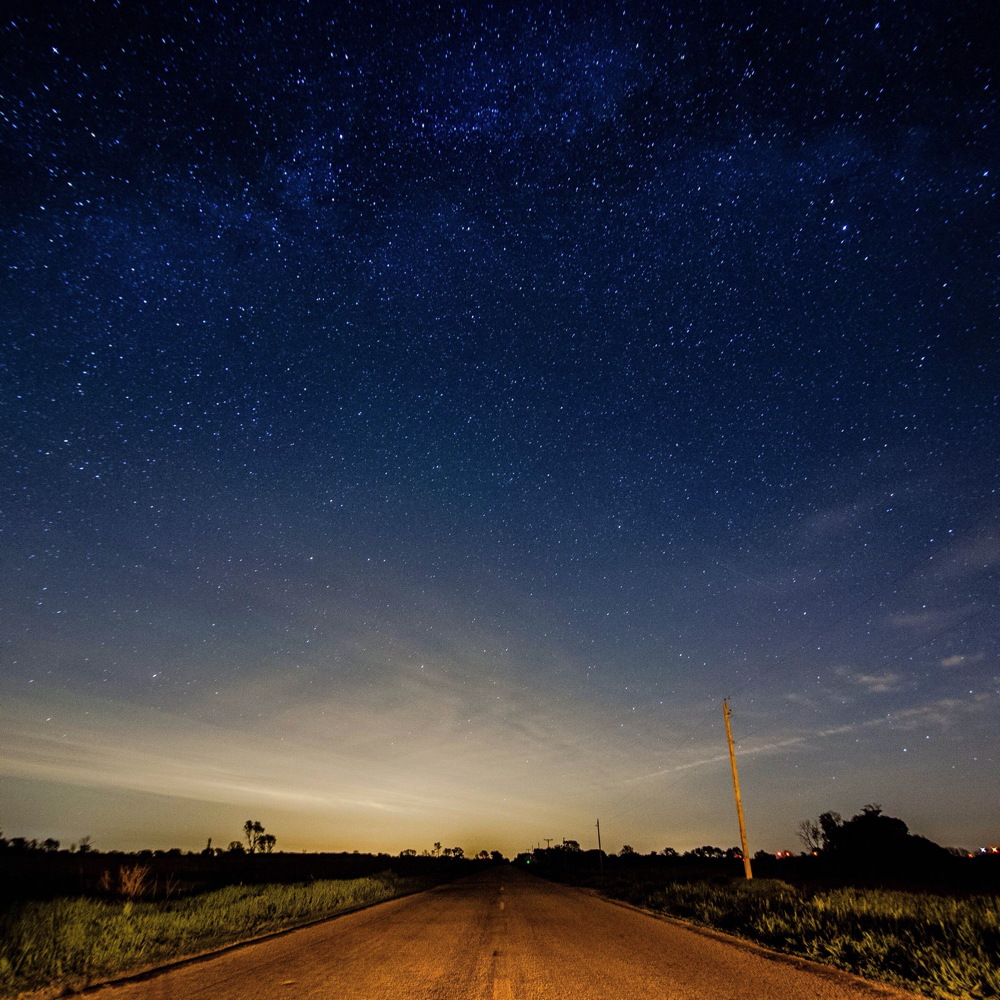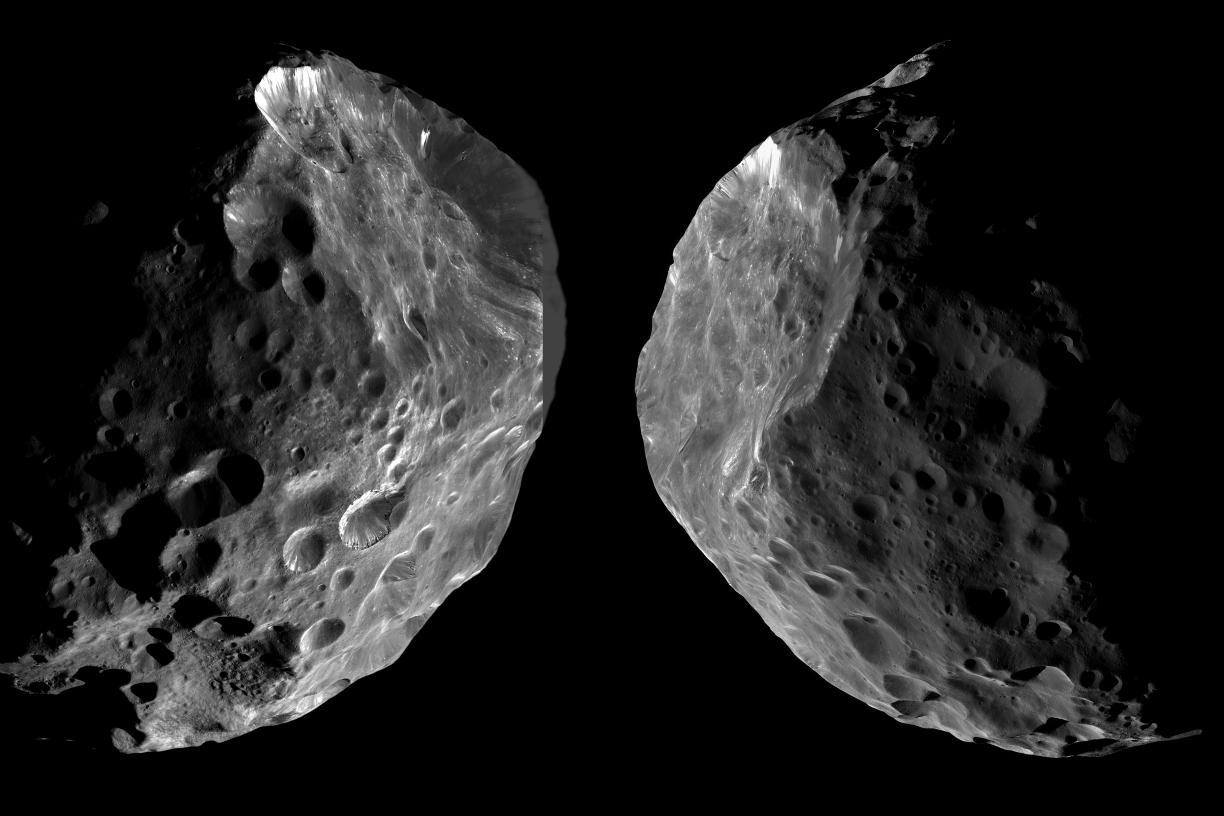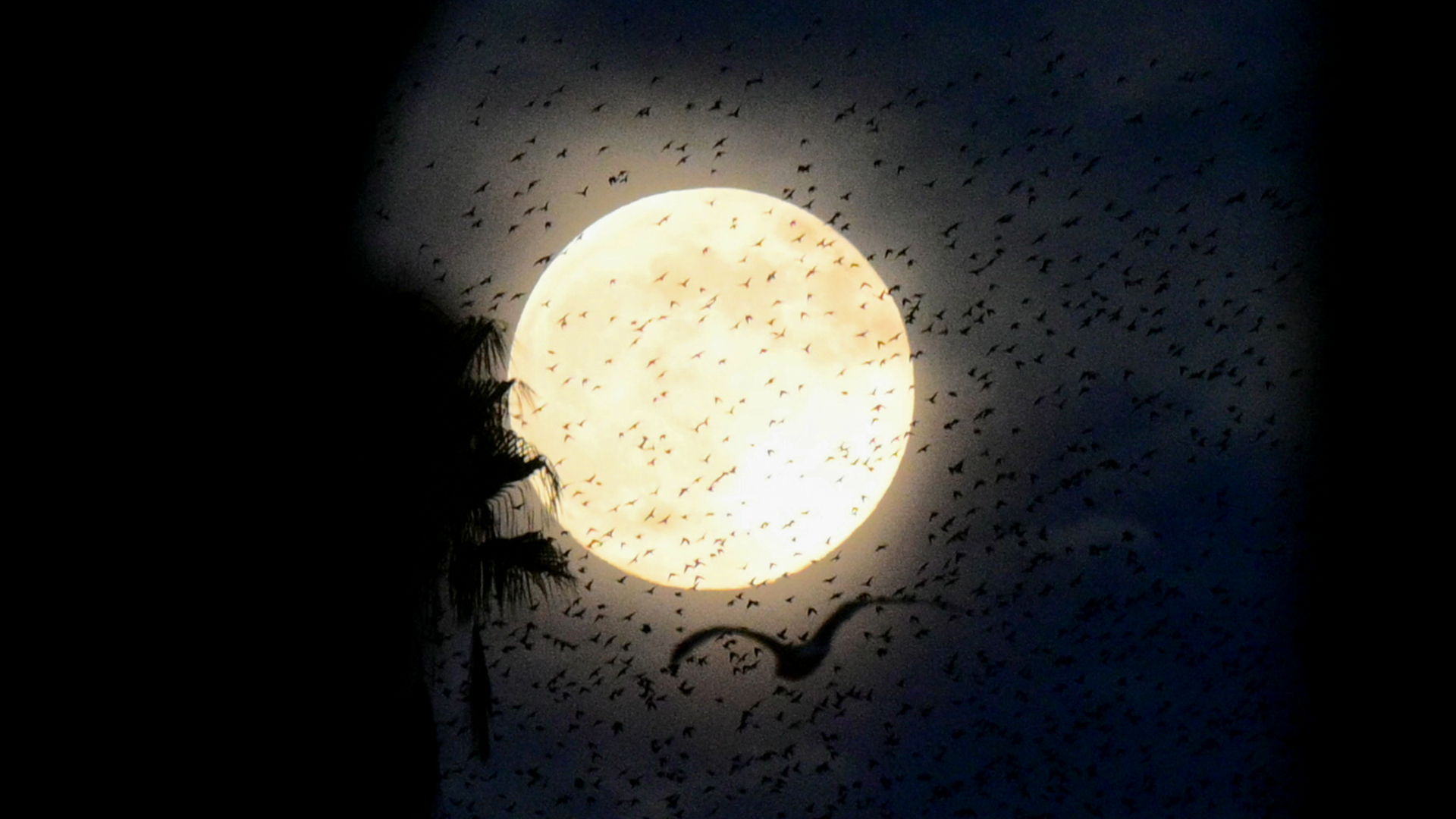Space Image of the Day Gallery (June 2014)
Image of the Day Archives
For older Image of the Day pictures, please visit the Image of the Day archives. Pictured: NGC 2467.
Your Serpent Cannot Be Denied
Monday, June 2, 2014: The Serpens Cloud Core glows in the constellation of Serpens, the “Serpent.” This infrared image combines data from NASA's Spitzer Space Telescope with shorter-wavelength observations from the Two Micron All Sky Survey (2MASS), allowing a peek into the clouds dust clouds wrapped around this stellar nursery. This cloud core, lying about 750 light-years away, contains one of the youngest collections of stars ever seen in our galaxy. This collection contains stars of only relatively low to moderate mass, without any of the massive and incredibly bright stars found in larger star-forming regions like the Orion nebula. The inner Serpens Cloud Core appears remarkably detailed in this image, as researchers assembled it from 82 separate snapshots totaling an amazing 16.2 hours of Spitzer observing time.
— Tom Chao
Arms to Hold You
Tuesday, June 3, 2014: A new Hubble image shows NGC 1566, a galaxy located about 40 million light-years away in the constellation of Dorado (The Dolphinfish). NGC 1566 represents an intermediate spiral galaxy, without a well defined bar-shaped region of stars at its center though it doesn’t quite count as an unbarred spiral. NGC 1566 is the second brightest Seyfert galaxy known, a type of galaxy with a very active and luminous center, emitting strong bursts of radiation, and potentially containing a supermassive black hole. It also shines as the brightest and most dominant member of the Dorado Group, a loose concentration of galaxies that make up one of the richest galaxy groups of the southern hemisphere.
— Tom Chao
You Can See the Stars
Wednesday, June 4, 2014: The fourth Unit Telescope of the Very Large Telescope at Paranal Observatory, Chile, stands under the stars. Located high on Cerro Paranal, the instrument perches at an altitude of 8645 feet (2635 meters) above sea level. Paranal represents the world's most advanced visible-light astronomical observatory and the European Southern Observatory’s flagship facility, containing a suite of telescopes. Image released June 2, 2014.
— Tom Chao
Home Is Where I Want to Be
Thursday, June 5, 2014: European Space Agency astronaut Alexander Gerst tweeted this image on June 2, 2014, from the International Space Station four days after his arrival at the outpost on a Soyuz spacecraft. He was accompanied on the flight by NASA astronaut Reid Wiseman and Roscosmos commander Maxim Suraev as members of Expedition 40. He wrote: “Home for 6 months / Mein Zuhause für die nächsten 6 Monaten #ISS #BlueDot pic.twitter.com/ziBnaO40uw” The image looks out of a viewport in the Russian part of the station towards the station’s solar wings and the European Cupola observatory module as the sun sets behind the Earth.
— Tom Chao
When the Red Sun Sets
Friday, June 6, 2014: A still image from a video taken by Solar Dynamics Observatory showed tight, bright loops and much longer, softer loops swaying above an active region on the sun, while a darker blob of plasma in their midst was pulled in different directions on May 13-14, 2014. Frames taken in the 171 Angstroms wavelength of extreme ultraviolet light are usually colorized with a bronze tone, but in this case were colored red.
— Tom Chao
The Dark Clouds
Monday, June 9, 2014: A new Hubble image shows IRAS 14568-6304, a young star cloaked in a haze of gas and dust. An area of dark sky appears to contain the young star. This dark region is Circinus molecular cloud, which has a mass around 250,000 times that of the sun, filled with gas, dust and young stars. Two areas within the cloud, Circinus-West and Circinus-East, each have a mass of around 5000 times that of the sun, making them the most prominent star-forming sites in the Circinus cloud. IRAS 14568-6304 has special qualities because it is driving a protostellar jet, which appears here as the "tail" below the star. This jet formed from the leftover gas and dust that the star took from its parent cloud in order to form.
— Tom Chao
Breaking space news, the latest updates on rocket launches, skywatching events and more!
Enjoy the Silence
Tuesday, June 10, 2014: The sun begins to rise over the Very Large Telescope (VLT) at ESO's Paranal Observatory in Chile. One of the VLT's Unit Telescopes stands at the bottom right, illuminated by moonlight. Further in the distance two Auxiliary Telescopes point up to the sky. The VLT consists of four 8.2-meter Unit Telescopes (UTs), and four movable 1.8-meter Auxiliary Telescopes (ATs). Nicolas Blind, an astronomer who visited Paranal Observatory for a few days in December 2012, took the photo. After his brief visit, Blind commented, "The absolute silence in this place is so peaceful and relaxing. You can only hear the sound of wind, or maybe a bat lost in this desolated area. The pure sky of Paranal reminds me each time how little we are, and reconnects me with the reason why I have chosen astronomy."
— Tom Chao
Streamers
Wednesday, June 11, 2014: Cassini spacecraft caught Saturn’s moon Prometheus creating gores and streamers in the F ring. Scientists believe that Prometheus and its partner moon Pandora shape much of the structure in the F ring. The orbit of Prometheus (53 miles or 86 kilometers across) regularly crosses into the F ring, where the moon causes gores, or streamers, at the point of entry. When it leaves the ring, Prometheus draws ring material with it, producing streamers in its wake, shown as the pattern of faint lines curving inward at upper left. Cassini spacecraft took the image in visible light with its narrow-angle camera on Feb. 11, 2014.
— Tom Chao
When We Come to the Place Where the Road and the Sky Collide
Thursday, June 12, 2014: Astrophotographer Craig Hensel sent in a photo of the night sky over western Illinois. He took the photo from the Green River Wildlife Management Area near Dixon, Illinois, and reports that it is one of the darkest places close to Chicago. Photo submitted June 5, 2014.
— Tom Chao
Ten Years After
Friday, June 13, 2014: On June 11, 2004, Cassini passed Phoebe, the largest of Saturn's outer moons, at an altitude of 1,285 miles (2,068 kilometers), the only close flyby of one of the outer moons of Saturn in the entire Cassini mission. The Cassini team published this montage of two views to mark the 10th anniversary of the Phoebe flyby. The image on the left side shows Cassini's view on approach to Phoebe, while the right side shows the spacecraft's departing perspective. Most of the left-side view was previously released except an area on the upper right side. Most of the view on the right side remained unreleased until now, although the crater at upper left appeared in another published image. Image released June 11, 2014.
— Tom Chao

Space.com is the premier source of space exploration, innovation and astronomy news, chronicling (and celebrating) humanity's ongoing expansion across the final frontier. Originally founded in 1999, Space.com is, and always has been, the passion of writers and editors who are space fans and also trained journalists. Our current news team consists of Editor-in-Chief Tariq Malik; Editor Hanneke Weitering, Senior Space Writer Mike Wall; Senior Writer Meghan Bartels; Senior Writer Chelsea Gohd, Senior Writer Tereza Pultarova and Staff Writer Alexander Cox, focusing on e-commerce. Senior Producer Steve Spaleta oversees our space videos, with Diana Whitcroft as our Social Media Editor.
